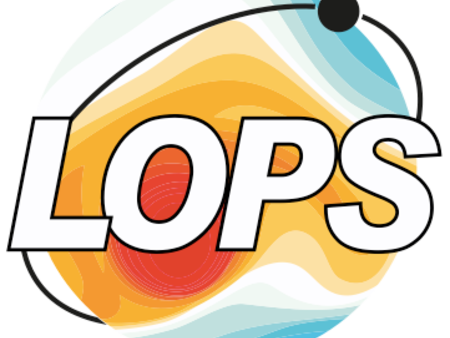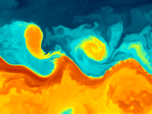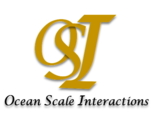"Ocean Scale Interactions" Team
Team Leaders
Jonathan Gula, Claire Ménesguen
Summary
Our team is focused on the study of fundamental mechanisms that govern ocean dynamics. We are particularly interested in small horizontal and temporal scales, which include mesoscale and submesoscale turbulence, internal waves, and internal tides. Below, we provide a more detailed list of research interests within our group.
Our research interests
- The ocean is turbulent no matter how closely one examines it — this is true at the submesoscale (0.1 km to 10s of km) and the mesoscale (10s of km to 100s of km). The types of questions we seek to answer in our research include○ what are the different dynamical regimes at each of these scales?
○ how are the scales connected to each another?
○ given that they span such a considerable range of scale, how do we model them? - Many regions of the global ocean are populated by coherent structures or vortices. Examples include large-scale eddies shed from the Agulhas Current (mesoscale Agulhas eddies), smaller-scale coherent eddies exported from the Mediterranean sea (“meddies”), and even submesoscale coherent vortices such as those found in the Gulf Stream and Persian Gulf. Additionally, both Rossby waves and smaller-scale internal waves exist within the ocean and fill the same band of the oceanic spectrum. The questions we seek to answer pertaining to these features include
○ how are these eddies and waves formed and dissipated?
○ how do these features (e.g. eddies and waves) interact?
○ what are their impacts on ocean circulation?
Our approach
To answer some of these questions, our group makes use of idealised and realistic models of oceanic flows, as well as observations. These models can range from simple analytical models (e.g. of barotropic sheared flow) to full numerical models that implement the primitive equations. Similarly, the observations employed by our group consist of both remotely-sensed measurements from satellites to in situ measurements made from moorings, gliders, ship-towed profilers and semi-Lagrangian floats. In all cases, we apply geophysical fluid dynamics concepts to the analysis of these data (i.e. observation and model data).
News
2022, En direct de la galerie 70.8 (a new museum in 'les Capucins' in Brest)
UBO newsletter, November 2021: "De petits courants influencent le climat mondial"
IRD communication, October 2020: "Dévoilement de l'énergie profonde de l'océan"
IUEM newsletter, April 2020: Noé Lahaye, "Physicien-océanographe postdoctorant CNES au LOPS".
Physics Today, 4th April 2019: "Resolving Eddies in the Gulf Stream"
UBO, April 2019 "De petits tourbillons découverts sous la surface de l'océan"









